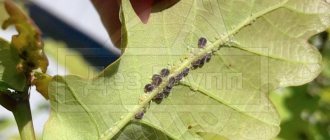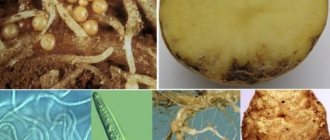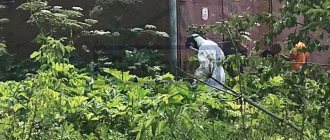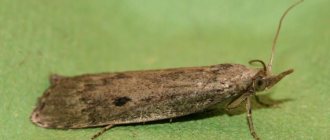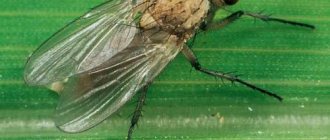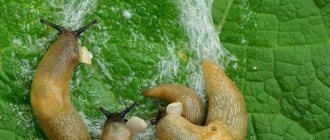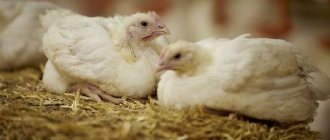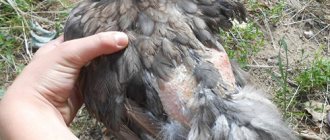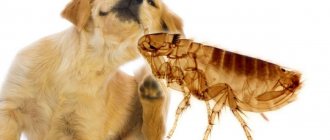How to deal with club cabbage
White cabbage of different ripening periods is necessarily grown by summer residents in their garden beds.
With proper care, from mid-summer you can cut off the tight heads of cabbage for preparing first and second courses, and from mid-autumn you can store cabbage for long-term storage. But proper planting and good further care for cabbage are not enough. Sometimes it begins to develop worse, the foliage of ripening heads of cabbage turns yellow, withers, and the cabbage dies over time. It is quite possible that a dangerous disease has appeared on the vegetable plant - clubroot
.
If serious measures are not taken to combat this disease on cabbage, then there will be no good harvests of this vegetable crop this season.
Contents of the article:
Description of the disease and signs of clubroot on cabbage Reasons for the appearance of clubroot on cabbage Prevention of the disease Healthy seedlings Medicines against clubroot when planting cabbage How to deal with clubroot on cabbage Treatment of soil for clubroot Checking the soil for the presence of clubroot
Advice from gardeners
Experienced gardeners know how to fight fungal disease and protect their crops from it forever:
- for preventive purposes, marigolds, spinach and calendula are planted next to cabbage;
- water the seedlings with lime milk (80 g of the substance is stirred in 1 liter of water) 2-3 days before transplanting them into open ground;
- Before planting seedlings, add 1 dessert spoon of calcium nitrate to each hole and mix it with the soil;
- Cabbage is grown in narrow beds, which makes it possible to localize the disease if necessary and quickly clear the soil of the pathogen.
Clubroot is a dangerous fungal disease that can completely leave a gardener without a vegetable harvest. Timely fight against the disease and compliance with preventive measures will help you cope with it and forget about its existence forever.
0
0
Copy link
Description of the disease and signs of clubroot on cabbage
Clubroot is one of the most dangerous and common fungal diseases, which often appears on cabbage and other cruciferous vegetable plants.
The main symptoms of the disease are thickenings and growths that appear on the root system of vegetable plants.
.
Kila cabbage - photo
At first, these formations on the roots do not differ in color from a healthy root system, but gradually they begin to rot. As a result, a huge number of fungal spores appear in the soil, which remain viable for at least 5 years.
Important!
The clubroot pathogen on cabbage feels especially comfortable in heavy clay and acidic soils, which contain too little organic matter, potassium, calcium, zinc, boron and chlorine.
This pathogenic microorganism can also overwinter in the remains of cultivated plants or weeds, so if vegetable growers have even the slightest suspicion of the presence of clubroot in the soil, then all plant remains should be burned immediately.
Clubroot spores living in the soil germinate if any plant from the cruciferous family is planted in it
. These spores settle on the root hairs of plants, as a result of which diseased bushes lose their connection with the soil and are easy to pull out.
Late cabbage varieties for storage - choosing the best
Description of the disease and pathogen
Clubroot is a fungal disease that primarily affects the root system of the plant. You can see multiple putrefactive growths on the roots. Such cabbage is no longer able to obtain moisture and nutrients from the soil, so it quickly stops growing, withers and dries out. The growths on the roots can even exceed the size of the head of cabbage itself. Rotten roots serve as a breeding ground for millions of new fungal spores.
The causative agent of clubroot is the parasitic fungus Plasmodiophora brassicae Woronin. It is not able to grow and develop outside the plant, but its spores quickly spread throughout the entire area and have phenomenal vitality: they remain in the soil for up to 7 years.
Fungal spores are not transmitted by air or by seeds.
Reasons for the appearance of clubroot on cabbage
One of the main reasons for the appearance of clubroot in a garden plot is purchased seedlings, on the roots of which the causative agent of the disease is located.
.
But even looking at each purchased sprout, it is very difficult to identify clubroot on its roots. Externally, purchased plants may look healthy and strong.
Clubroot on cabbage Ways to combat fungus Tips from an expert
But if, nevertheless, at least some suspicious thickenings were noticed on the roots of cabbage seedlings or other vegetable plants, it is better to get rid of them - after all, purchasing new seedlings is much easier than fighting clubroot on the site.
Seedlings infected with this dangerous fungal disease most often die at the seedling stage. If an adult plant is affected by clubroot, its foliage becomes light purple, gradually turns yellow, withers and falls off. You cannot get a harvest from such plants.
Even if heads of cabbage appear on clubroot-affected bushes, they will grow small and deformed.
If cabbage seedlings were affected by clubroot at the seedling stage, then the new growths in this case will be concentrated only on the main root. If the growths appeared only on the lateral roots, then the clubroot got onto the plants from the soil.
Aphids on cabbage: how to cope
Most often clubroot affects:
- varieties of cauliflower;
- early white cabbage;
- many Dutch hybrids of cruciferous vegetable crops.
But this pathogenic pathogen can enter the site not only with purchased seedlings.
Clubroot on cabbage - how to fight
Other factors predisposing to the appearance of clubroot in the garden are:
- too acidic soil;
- the remains of diseased plants were placed in the compost heap;
- fresh manure placed in beds with planted plants;
- too much watering without subsequent loosening of the root zone. On heavy clay soils, as a result, a dense crust quickly forms, which prevents oxygen from reaching the roots;
- non-compliance with crop rotation rules.
Preventive actions
It is very important to prevent clubroot from appearing on cabbage, since getting rid of an existing disease is always more difficult than preventing it. Moreover, if we are talking about such a complex fungal infection, which is popularly called “cabbage cancer.” The easiest way to breed varieties is that are immune to the fungus Plasmodiophora brassicae. If there are none, then the main attention should be paid to pre-sowing tillage.
Related article:
How to get rid of snakes on your property: a safe and affordable way
Kill-resistant varieties
White cabbage varieties with resistance to clubroot are shown in the table:
| Variety | According to ripening period | Regions of Russia suitable for cultivation | Average fork weight, kg |
| "Kilagreg" | Early | North-West, Center, Volga-Vyatka region, Central Black Earth Region, Urals, Western Siberia | 1,8–2,6 |
| "Tequila" | Average | North, Center, Volga-Vyatka region, North Caucasus, Ural, Western Siberia, Far East | 2,3–3,2 |
| "Kilagerb" | Average | North-West, Center | 2,5–3,2 |
| "Hope" | Average | All except the North and North Caucasus | 2,6–3,3 |
| "Ramkila" | Late | Center | 2,2–2,8 |
| "Kilaton" | Late | North-west, Center, Volgo-Vyatsky district | 2,0–2,7 |
The varieties most susceptible to fungal damage are “Belorusskaya455”, “Vyuga”, “Zolotoy Hektar1432”, “No. 1 Gribovsky147”, “Slava1305” and “Slava Gribovskaya231”. When growing cabbage in regions at risk, they should be abandoned.
If we talk about cauliflower, then two varieties are characterized by high resistance to clubroot:
- early Clarify - for salads and canning;
- mid-early “Clapton F1” – for salads and freezing.
When growing Chinese cabbage, it is recommended to take hybrids - “DzhaninF1”, “KilakinF1” and “SuprinF1”.
Processing of seedlings
Effective control of clubroot must be comprehensive and begin before transplanting seedlings into open ground. To do this you need:
- 7–9 days in advance, treat the area with a solution (0.1%) of “Fundazol” or a mixture of copper sulfate and calcium hydroxide (300 g each) diluted in a bucket of water;
- 2 days in advance - water the soil in the seedling container with lime diluted in water (80 g per 1 l);
- Before planting, immerse the roots of the seedlings for 2 hours in a solution of “Fitosporin-M” or sulfurous substances (colloidal sulfur, “Tiovit Jeta”, “Cumulus DF”), and also dust them with dry lime or dip them in a lime-clay mixture.
Related article:
13 types of oregano for your garden: revealing the secrets of growing
Immediately during planting, you need to pour 2 tsp into the holes. calcium nitrate or ½ cup of wood ash, mix with soil and only then lower the seedling. Cabbage beds should be made narrow so that when signs of damage appear, its spread can be quickly stopped. It is recommended to plant the above plants around the perimeter to destroy fungal spores.
Soil preparation
Changing the composition of the soil is required in cases where it is clayey or sandy and creates a favorable environment for the development of the clubroot cabbage pathogen. To do this, add another type of soil or organic matter to it. Best suited:
- black soil;
- peat;
- forest soil;
- rotted cow dung;
- compost.
The complexity of the event lies in the fact that it must be carried out annually, since the original composition of the soil will be constantly restored. In addition, Plasmodiophora brassicae spores can remain viable even after treating the bed with fungicides. Therefore, to prevent the disease from appearing again, it is necessary to create conditions that prevent its development:
- reduce soil acidity;
- do not plant other cruciferous crops in the neighborhood;
- regularly treat the bed with the above antifungal drugs;
- change the chemical characteristics of the soil by adding organic matter or a suitable soil composition.
Systematic implementation of such measures will help prevent new damage to cabbage plantations by clubroot.
Disease prevention
No one will argue that preventing the appearance of diseases, including clubroot, on garden crops is easier than fighting them.
Therefore, it is necessary to strictly observe preventive measures, thanks to which you can prevent the appearance of this pathogen in beds with vegetable plants:
- plant only varieties of vegetables with high immunity to clubroot in your garden;
- strictly follow the rules of crop rotation. Cabbage can be grown in one place every 5-6 years. And in these years it is better to alternate nightshade types of vegetables, goosefoot or lily plants;
- Once every 5 seasons, lime or dolomite flour must be added to the soil. If the soil in the garden is prone to acidification, then liming should be done more often. At the same time, up to 150 g of lime is added to sandy soils for each square of area, up to 300 g for clay and peat soils;
- Regularly apply organic fertilizers (compost, humus, rotted manure) to the soil - up to 10 kg of such fertilizing for each square of area. Organic fertilizers improve soil structure and fertility. It is also recommended to feed beds with cruciferous vegetable crops with diluted peat humate several times a season;
- After harvesting, plant green manure in the beds, which help restore soil fertility and loosen it. After cabbage, it is recommended to plant winter rye as green manure;
- You should take care of the cabbage in the beds in a timely manner - observe the irrigation regime, regularly apply fertilizers, remove weeds;
- It is very important after watering and fertilizing to loosen the root zone of cabbage and carry out hilling. As a result, the growth of lateral roots is activated, and the resistance of cabbage to most diseases increases.
How effective are control and prevention measures?
Like spores of other organisms (for example, fungi), spores of Plasmodiophora brassicae can go into suspended animation and remain in this state for up to several years. In this case, the spore is covered with a special shell that prevents toxins from penetrating into it.
Thus, it can remain viable even after fungicides are added to the soil. This means that even with full-scale treatment of the affected area, the disease can manifest itself again.
To prevent this from happening, it is necessary to maintain conditions that prevent the development of the parasite:
- Low soil acidity.
- Lack of other cruciferous crops near cabbage plantings.
- Regular treatment of the soil with fungicides.
- Adding chernozem, manure, and peat to sandy and clayey soil.
- Planting plants near cabbage that the parasite is afraid of.
Expert opinion
Yulia Safronenko
Big fan of experiments and personal gardening techniques
Ask a Question
Only with regular use of these measures can a new outbreak of the disease be avoided.
Healthy seedlings
Clubroot is not transmitted through planting material, but you need to remember: in the future, adult plants may not be affected by clubroot if vegetable growers have grown strong and healthy seedlings.
And the key to healthy seedlings is pre-sowing treatment of seed material as follows:
- heat treatment of seeds
. At the same time, they are immersed in water with a temperature of up to 50 degrees Celsius for 1/3 of an hour. But it is very important that the water temperature is not higher than the specified limit, otherwise the seed material will overheat and lose germination. And if the ode is colder, then there will be no positive effect from such a procedure; - seed material is placed in a 1.5% solution of mustard powder for ¼ day;
- seeds must be kept in a solution of any growth regulator
(for example, Epin). After this procedure, the germination of the seed material increases, it will germinate faster, and the immunity of adult plants to diseases will increase; - seed material can be placed in a solution of ascorbic acid
(0.2 g of the drug per 2 liters of water) for 18 hours. After such treatment, the seedlings grow stronger, and their root system becomes more powerful.
After each such procedure, the seeds should be washed with running water.
Clubroot on cabbage, a dangerous fungal disease, control measures
Site testing
The results of the preventive and health measures taken need to be checked in order to return cruciferous plants to such beds where there really will be no pathogenic microorganisms. To do this, they first plant Chinese cabbage, which grows the fastest. During the entire growing season, several plants are dug up and their root system is checked.
Checking for clubroot should begin at the stage of the appearance of the first true leaves and continue until full-fledged forks are formed. If there are no pathological changes, then you can begin to grow any cruciferous crops on the site. The appearance of even a small growth can be considered evidence that spores remain in the ground. In this case, you need to carry out treatment measures for another year.
Preparations against clubroot when planting cabbage
You can protect cabbage seedlings transplanted to a permanent location from clubroot using the following methods:
- about a week before transplanting cabbage seedlings to a permanent place, the beds prepared for it should be treated with the following solution: dilute 300 g of copper sulfate and 300 g of quicklime in 8 liters of water and spill the soil;
- before transplanting, the roots of cabbage seedlings are dipped in a Fitosporin solution for a couple of hours;
- add a handful of ash to the bottom of the planting holes;
- after transplanting cabbage seedlings to a permanent place, sprinkle the beds with sifted flour or crushed charcoal;
- Lime milk is watered under each plant.
Signs of defeat
The defeat of cabbage by clubroot begins with the roots, on which clearly visible white thickenings or swellings form. They can be of different sizes and different shapes. When cabbage is infected even at the age of seedlings, these thickenings are located on the main roots and are large in size. If the infection occurred already during the period of cabbage growth on the ridges, then clubroot growths are located on the peripheral roots and look like beads or icicles. By the end of the season, the thickenings become brown and begin to rot and collapse.
At the same time, many spores are released into the ground. They can stay in the ground for years, and as soon as a cabbage plant is planted nearby, they begin to germinate and penetrate the roots through the root hairs. In their tissues they multiply, merge together and infect neighboring tissues.
The above-ground parts of cabbage also suffer - due to malnutrition, the leaves wither, especially in hot weather, and turn yellow, the heads of cabbage grow small and soft or do not set at all. Young plants may die. Since lethargy and yellowing of leaves can be a sign of other diseases or violations of agricultural practices, clubroot can be accurately identified only by its characteristic root thickenings.
How to fight clubroot on cabbage
If at least one plant infected with clubroot appears in the garden beds, the disease will quickly spread throughout the entire area. But if the disease is detected in time, then you can have time to localize the disease and clear the soil of clubroot.
Cabbage pests: recognizing and fighting
To do this, you need to carry out the following activities:
- diseased plants are removed from the beds, dried and burned on a metal surface. In this case, the plants must be doused with a flammable liquid so that the fire is smokeless, otherwise the disease spores will spread throughout the area with the smoke;
- for working in beds with clubroot, you need to select a separate tool so as not to spread the pathogen throughout the entire area with unsterile tools;
- pathogens can be carried on the ground on shoes. Therefore, you should first collect all the diseased plants in the beds, change your shoes and wash them thoroughly;
- All weeds should be regularly removed from the beds, especially from the cruciferous family.
If there are few plants with clubroot disease in the cabbage bed, then they are removed and burned, and the place where they grew is spilled with a bright pink solution of potassium permanganate.
If clubroot is found in a certain area, then cabbage and other cruciferous crops cannot be grown in this place for the next 5-6 years
, as well as root crops, since when they are harvested with soil, clubroot can be spread throughout the area. But leafy or fruit-bearing vegetable crops grow well in such areas and produce a harvest.
Important!
Only with the help of such a quarantine can you get rid of the clubroot pathogen on the site.
Factors provoking the disease
The source of infection is usually the soil in which the fungal spores live. They can maintain their viability for a very long time - 6 or more years. In addition, spores are well preserved in compost, so putting plants infected with a parasitic fungus into it is strictly prohibited.
The pathogen, which entered the soil from decomposed plants, can be spread throughout the entire area with the help of water, soil insects and earthworms. Clubroot is introduced into uninfected areas mainly with diseased seedlings. Weeds can also be a source of infection.
The development of clubroot is favored by the following climatic conditions:
- air temperature 18-25°C heat;
- ambient humidity 75-90%;
- soil acidity is 5.6-6.5, that is, acidic and slightly acidic soils; in a neutral environment, the activity of the pathogen decreases, and in an alkaline environment (pH greater than 7.0) it dies.
Most often, this disease is recorded in the Non-Black Earth Region, the soils of which are characterized by high humidity and acidity. It is a frequent visitor to heavy and wet soils.
However, overdried soil also contributes to the awakening of microorganisms, as well as depleted soil, which has a lack of calcium and potassium, as well as microelements - boron, zinc and chlorine, humus.
As soon as soil infestation with clubroot is detected, the area is “sent” to quarantine, which can last for several years.
Soil treatment for clubroot
If clubroot has spread throughout the entire plot or most of it, then the owners will have to carry out large-scale measures to treat the soil in their garden beds.
Experienced gardeners recommend fighting clubroot in the area in the following way:
grow plants in the garden that can not only resist this pathogen, but also quickly destroy it.
The main healing cultures are:
- potato;
- tomatoes;
- onion;
- winter and spring types of garlic;
- beet;
- spinach.
Diseases of cabbage in open ground: description and methods of control
When tomatoes and potatoes are grown in an area infected with clubroot, the pathogen disappears after 3 seasons; onions, garlic and vegetables of the goosefoot family deal with this disease in a couple of seasons. And if tomatoes and spring garlic are grown nearby, clubroot can be limed in just one season.
Fighting methods
Dormant spores of the parasitic fungus live in the soil for up to 7 years, but if host plants are not planted on the site, their viability decreases every year. Therefore, one of the effective methods of combating this disease is crop rotation, but folk remedies, as well as chemicals, are also used.
Crop rotation
Plants are planted in the area with clubroot that are not only resistant to it, but also accelerate the death of the fungus.
“Pills” for clubroot are:
- All plants of the nightshade family - tomatoes, potatoes, eggplant, peppers, aromatic tobacco, hybrid petunias and others. They will cure the earth of a pathogenic microorganism in 3 years.
- Crops of the goosefoot family - beets, spinach, chard. The last two families will help clear the land of spores even faster - in 2 years.
- Representatives of the lily family include onions, garlic, lilies, hyacinths and others.
The best therapeutic effect was shown by mixed plantings of tomato and spring garlic. In this case, the soil becomes healthier in 1 season. Next spring, to be on the safe side, beets are planted in this bed.
Folk remedies
If cabbage gets sick in adulthood, you can try to save the crop using folk remedies. But, it should be remembered that it will not be possible to completely cure clubroot this season. Apply:
- Infusion of wood ash. At the first signs, all withered, yellowed leaves are torn off, and the bush is watered with an infusion of wood ash - 10 glasses of the substance are poured into 10 liters of water and left for 2 days. Then 1 liter of infusion is poured into a bucket of water, stirred and 500 ml is poured under each bush. Water the plants after the main watering. Next, the cabbage is hilled higher - this promotes additional root growth in the upper part of the stem.
- Organic. Once every 7 days, organic fertilizers are applied to the plants - mullein, vermicompost, compost, yeast. They help curb the activity of the fungus and its spread.
- Tops. After harvesting, crushed beet and quinoa tops are spread on the site, a large amount of organic matter is added and the soil is dug up.
- Mortar. Infected beds are also watered with lime mortar - 150 g of lime is dissolved in 5 liters of water. 500 ml of the prepared solution is poured under each bush. After this procedure, the pH of the soil will increase and it will become alkaline.
If clubroot manifests itself at the last stage of development, then all heads of cabbage are removed and the soil is immediately treated.
Chemical and biological drugs
This pathogen is resistant to most antifungal drugs. But experimentally, several drugs have been found that really help inhibit the growth and development of the fungus. This:
- Trichodermin;
- Previkur;
- Glyocladin;
- Topaz;
- Fitosporin-M;
- Alirin B;
- Fundazol.
However, no drug can destroy the parasitic fungus and cure cabbage; they only inhibit the development of the fungus and prevent its reproduction.
Vegetables that kill clubroot fungus
Certain vegetables quickly kill clubroot in just one season. We mentioned them above.
Leeks, for example, cannot cope with such diseases. The same situation applies to garlic. Only winter garlic is healthy in the fight against clubroot. It follows from this that in a garden where clubroot infestation has been detected, it will be more effective to plant garlic in the winter, and tomatoes and onions in the spring.
In the place where the plant affected by clubroot previously grew, it is better to subsequently plant tomatoes and onions
Rejection and planting of seedlings
When planting cabbage seedlings, you must remove all weak (lagging in development) specimens without regret. This way you can reduce the likelihood that plants that are sick not only with clubroot, but also with other diseases will be planted. Good seedlings should be strong, green, with at least 5 true leaves. You also need to select seedlings with diseased roots.
